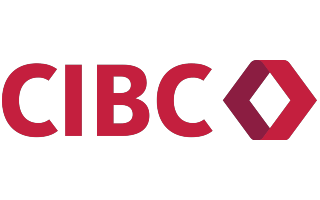Online trading platforms make it easier than ever to start buying and selling stocks yourself at a much lower cost than a traditional full-service broker. It’s quick and easy to open trading accounts completely online, so let’s walk through a step-by-step guide on how to open a brokerage account.
How to open a brokerage account in Canada
The exact steps for opening a stock trading account vary between platforms. But while there may be some minor differences between brokers, the steps you need to follow will look something like those outlined below.
- Compare trading platforms
- Fill out an online application
- Verify your identity and submit your application
- Deposit money into your account
- Start trading
Let’s take a closer look at each step in more detail.
Step 1: Compare trading platforms
From trading platforms backed by the Big Five banks to a host of discount brokerages, there are plenty of options to compare when choosing a trading platform. Each broker offers its own fee structure, account types, trading options and platform features, so shop around to find one that’s right for you.
If you’re a new investor, key features to look for include:
- Low or no fees. While traditional brokers charge trading commissions, some Canadian brokers now offer commission-free stock trading. Also check whether there are any annual or account maintenance fees that apply.
- User-friendly platforms. Read user reviews and watch tutorial videos to make sure you choose a broker with easy-to-use online and mobile trading platforms.
- Market access. The best trading account for you provides access to the assets and markets you want to invest in. Some brokers support Canadian and US stocks and ETFs only, while others support a much wider range of securities and provide access to global markets.
- Customer support. Check whether you can access customer support through multiple channels and during convenient hours.
- Regulation. Look for a broker that is regulated by the Canadian Investment Regulatory Organization (CIRO) and is a member of the Canadian Investor Protection Fund (CIPF).
- Deals and discounts. You can also look for a trading platform that has special offers for new customers. Check out our guide to the best brokerage signup bonuses for more information.
More experienced investors may want a trading platform that offers features like options trading, margin trading, charting tools and advanced order types.
Step 2: Fill out an online application
Once you’ve chosen a broker, head to their website and click on the link to open an account. You will need to be a Canadian resident, the age of majority in your province or territory, and have an active bank account to be eligible to apply. You can also save time by having any necessary documents — like proof of ID, your SIN and bank account details — ready before beginning an application.
Choosing the right type of brokerage account
There are two main types of brokerage accounts to choose from — self-directed accounts and managed accounts.
- Self-directed brokerage account. With this type of account, you’re in control. You choose what to invest in and how much you want to invest in each asset.
- Managed account. With this type of account, investment decisions are made by a robo-advisor or a real-life portfolio manager. The advisor manages the account for you (for a fee), and makes investment decisions based on your financial goals and risk tolerance.
The next decision you need to make is whether you want a non-registered or registered trading account. If you decide on a non-registered account, for new investors, the best approach is to open a cash account, which lets you trade stocks with your own money. Experienced traders can also consider a margin account, which lets you trade with money you borrow, but margin trading is risky and not suitable for new investors.
You also have the option of choosing a registered account that offers tax advantages and other benefits. Popular options include:
- Tax-Free Savings Accounts (TFSAs). The investment income you earn inside a TFSA is tax free, and you can use your account to invest in stocks, ETFs, bonds and a range of other assets.
- Registered Retirement Savings Plans (RRSPs). The contributions you make to an RRSP are tax-deductible, and you can defer tax on the investments and savings in your account until you retire.
- Registered Education Savings Plans (RESPs). You don’t pay tax on the investment income in an RESP until you make a withdrawal, while you may also be eligible to receive extra funding from government grants.
You may also be able to open a joint account to share your investments with another person.
What information do I need to provide to open a brokerage account?
Personal and contact information
You’ll need to provide your:
- Full name
- Date of birth
- Email address and phone number
- Residential address
- Social Insurance Number (SIN)
Many platforms use two-factor authentication, such as one-time codes sent to your phone via text or an authenticator app, to prevent unauthorized account access. You may have to confirm the phone number and email address linked to your trading account before your application can proceed.
Employment and financial information
To satisfy Know Your Client (KYC) regulatory requirements, brokers may ask you to provide the name of your employer and some basic financial information. This information is requested to help brokers comply with regulations designed to prevent fraud and money laundering. You’ll also need to provide bank account details to transfer funds to and from your investment account.
Step 3: Verify your identity and submit your application
For security purposes, you’ll need to provide a copy of valid, government-issued photo ID (such as a driver’s license or passport) to your broker. It’s quick and easy to upload a photo of your ID online or via your trading platform’s mobile app. Just make sure the name on your ID matches the name you provide when creating your brokerage account.
Your broker may also request an extra document as proof of ID or your residential address, such as a recent utility bill or bank statement that shows your name and address.
Once you’ve verified your ID and completed your application, approval often takes anywhere from 1 to 2 business days. There could be delays if you’re missing information or your ID is unclear.
Step 4: Deposit money into your account
Now it’s time to deposit funds into your account so you can start trading. Deposit methods vary between brokers, but you may be able to fund your account by:
- Linking your bank account for electronic funds transfers
- Interac e-Transfer
- Wire transfer
- Online bill payment
- Debit card payment
Note that some brokers require a minimum deposit before you can start trading, but many have no minimum deposit requirements.
Step 5: Start trading
Once your account is open and funded, you can start buying and selling stocks and ETFs. Top brokerage platforms offer both online and mobile app trading, making it easy to invest just about anytime, anywhere.
Make sure you decide on an investment strategy before placing any trades. You’ll also need to research a stock or ETF thoroughly to work out whether it aligns with your investment goals and risk tolerance.
Compare trading platforms in Canada
Finder Score for stock trading platforms
To make comparing even easier we came up with the Finder Score. Trading costs, account fees and features across 10+ stock trading platforms and apps are all weighted and scaled to produce a score out of 10. The higher the score, the better the platform—it's that simple.
What can I invest in from my trading account?
The assets you can trade vary from one broker to the next. Some trading platforms focus only on Canadian and US stocks and ETFs, while others provide access to global stock exchanges as well as a range of other asset classes.
You can open a trading account to invest in:
- Stocks
- ETFs
- Bonds
- Mutual funds
- Options
- Futures
- Bonds
- GICs
- Precious metals
- Cryptocurrency
- Forex
Tax considerations when you open a brokerage account
Simply opening a trading account won’t have tax implications, but that changes when you start trading.
If you open a non-registered account, you’ll need to report any investment income you receive on your tax return. This includes interest income, dividend payments, and capital gains when you buy a stock and then sell it for a higher price.
How you’re taxed also depends on whether the CRA classes you as an investor or a trader. Typical investors invest for the long term, and they can take advantage of a 50% reduction on capital gains tax. But if you’re a day trader who makes frequent buy and sell trades to profit from short-term price movements, your investment income is treated as business income for tax purposes and 100% of it will be taxed.
Of course, if you open a tax-sheltered account like a TFSA or RRSP, you can take advantage of various benefits to help reduce the amount of tax you pay.
Learn more about your tax obligations in our stock trading tax guide.
Bottom line
It’s easier than ever to open trading accounts in Canada and start investing in stocks. Most self-directed trading platforms let you apply online in minutes and get approved in 1 or 2 business days. Once you’ve funded your account, you’re all set to start investing. But before you apply, make sure you’ve carefully compared trading platforms to find the right brokerage account for your needs.
Frequently asked questions about how to open trading accounts
Sources
More guides on Finder
-
7 space stocks to watch
Want to invest in space companies? We’ve put together a list of space stocks you should keep your eye on.
-
7 oil tanker stocks to watch
Want to invest in oil tanker companies? We’ve put together a list of oil tanker stocks you should keep your eye on.
-
4 diamond stocks to watch
Want to invest in diamond companies? We’ve put together a list of diamond stocks you should keep your eye on.
-
8 sports stocks to watch
Want to invest in sports companies? We’ve put together a list of sports stocks you should keep your eye on.
-
What is a stop-loss order?
Learn how a stop-loss order can help you limit losses or lock in profits when trading.
-
Best renewable energy stocks
These are the best renewable energy stocks to buy now in Canada.
-
Best stocks to buy right now in Canada
Finder’s unique algorithm found the 20 best TSX stocks to buy right now.
-
Guide to 10 of the best ETFs in Canada
Learn how to choose the best ETFs to buy right now in Canada.
-
What is micro-investing?
Round up your spare change into big bucks with Canadian apps designed for saving, depositing and investing.
-
Best investment accounts in Canada
Compare defensive and growth investments to find the best investment accounts in Canada for you.




